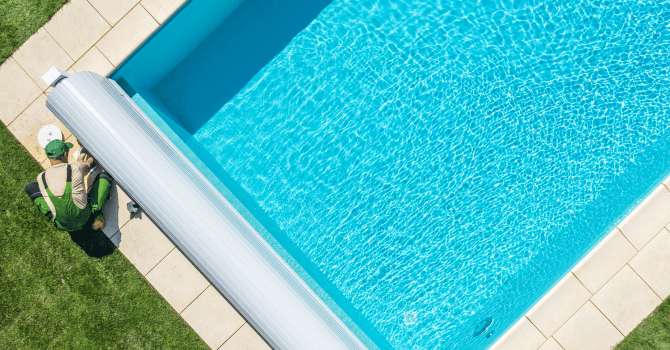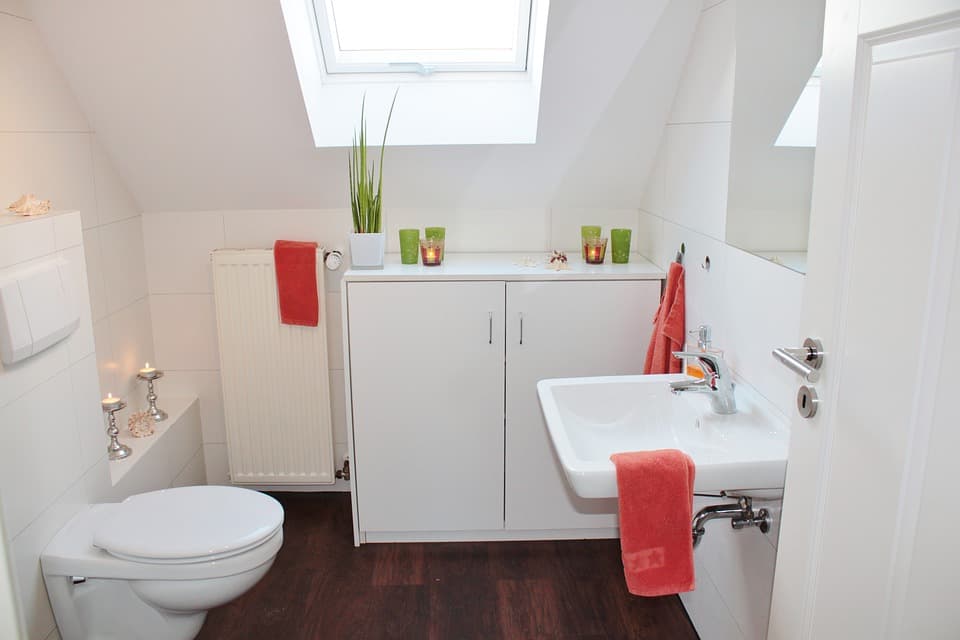
Noisy pipes are likely the cause of a significant problem, often leading one to hire a plumber.
Albeit, at times, it’s the necessary recourse, you can also head the DIY route, and fix some problems yourself. However, first and foremost, you must understand the cause behind the noisy household pipe.
Noisy Pipes: A Few Tips

Source: Canva
Water hammer: What should you do?
This hammering sound, better known as a “water hammer,” results from the noise made when water hammers against a closed valve that doesn’t have a drainage outlet. Therefore, a water hammer occurs when a significant change in velocity comes about inside the pipe.
To fix this problem, we suggest tightening the screws on either side of your pipe strap. Note that the screws are positioned on the metal strap that surrounds the pipe. If the whole device isn’t securely affixed, the vibration caused by the water flowing through the pipes makes the hammering sound you hear.
Incidentally, anti-vibration clamps do exist if you want to minimize your odds of having noisy pipes. Note that plastic straps are typically better than metal ones.
The water hammer sound might be especially loud if your pipe, through excessive movement, is banging against the wall. If that’s the case, you can prevent this from further happening by placing a piece of wood against the wall and your pipe.
Also, it might be that there aren't enough pipe straps, and they might also be fitted too far apart, which explains the installation’s diminished sturdiness. Note that pipe straps should be positioned every two metres.
Lastly, it’s worth knowing that your plumber may decide to fit water surge-shock absorbers on your pipes. This device is designed with a leakproof canister, and one end is connected to the pipe where the water hammering sound comes from.
Inside the surge-shock absorber, there’s a membrane that separates air from water. When the water hammer occurs, the pressure that’s created allows for the fluid to seep into the absorber, gradually distorting the inner membrane. As a result, overall noise is significantly reduced.
Need help to pinpoint a potential problem with your kitchen faucet? Check out our article on the subject matter!
A crackling sound coming from the floor: What should you do?
A crackling sound coming from the ground is usually a result of pipes contracting and expanding, and that movement results in the pipes rubbing against the floor boards and joists.
In keeping with the theme of this article—fixing problems—make sure that the pipes running through the joists beneath the floorboards are securely affixed to the joists with a plastic strap. If they’re not, you can wrap the pipe in a cloth where the pipe and joists intersect.
Hiccuping faucet: What should you do?

Source: Canva
If, when you turn on your faucet, the water isn’t flowing in one single stream, the problem is likely caused by air in the pipes.
In the event that you have a double-bowl sink in your kitchen, which logically has separate hot water and cold water taps, try this out:
cut a small section of pipe and tie one of its ends to the hot water tap and the other to the cold water tap;
make sure the installation is leakproof to prevent any water leaks;
now you can turn on both taps. With a bit of luck, the cold water will put pressure on the hot water, which will dislodge the air bubble.
Another option is to turn on all the faucets in your home simultaneously. The additional water flow will likely dislodge the air bubble inside your pipes.
Check Your Water Pressure to Prevent Noisy Pipes

Source: Canva
To avoid any noise inside your pipes, set the water pressure in a suitable setting. To prevent any damage to pipes, the pressure should be set between 2 and 3.5 bars. Any lower, pressure will be insufficient to push water through all the pipes. To adjust the water pressure, you’ll need to have a regulator. Otherwise, you’ll have to purchase an air chamber.
You may need to replace your pipes altogether…
Albeit it’s rarely the case, it may be that your piping needs to be replaced. Note that pricing in that regard can significantly differ. To know exactly where you stand, request at least three quotes from certified plumbers.
According to the Office de la protection du consommateur (Consumer Protection Office), a quote should detail the following information:
The work start and finish dates.
An itemized breakdown of each step and its pricing.
Payment terms.
A detailed description of the work to be done and materials that’ll be used.
While the above-mentioned tips will be very helpful to avoid spending significant sums of money on plumbing, note that certain precautionary measures should be taken to protect your pipes against the cold.
Type of pipe noise problem | Solutions |
Water hammer |
|
Floor crackling |
|
Hiccuping sound |
*Applicable solution for double-bowl sinks. |
Want to keep reading about plumbing-related problems? Consult our article The 10 Most Common Plumbing Issues.
Get 3 renovation quotes for your plumbing project
RenoQuotes.com will connect you with 3 reliable contractors for your plumbing project. Fill in the form on our homepage (it only takes a few minutes) and receive quotes from trusted professionals.
Dial 1-844 828-1588 to speak with one of our customer service representatives.
Looking for something else?
Related articles
The latest industry news, interviews, technologies, and resources.

Christine Simard
•07 Nov 2023
Whether you live in a small apartment or a large family home, the organization of your space is the key to keeping your household neat and well kept together.

Editorial Team
•02 Jul 2024
Floor drains found in basements, garages, and other areas of your home are a crucial part of water management. A clean floor drain is a must to prevent foul odours and obstructions and maintain proper drainage. This guide will detail how to clean a floor drain, what techniques to use to spot and unclog an obstructed drain, and how to regularly maintain your drainage system to ensure its proper functioning. Check out our practical tips and tricks for the best maintenance practices.

Editorial Team
•25 Aug 2025
A framing nailer, or nail gun, is defined as the standard tool used to streamline jobsites. Discover the material and tools needed to efficiently nail your framing together.

Editorial Team
•07 Nov 2023
With the swimming season around the corner, the only thing you’re probably awaiting is taking that first refreshing dip into a nice, clean pool. But first, you have to open it, which isn't a fun thing to do. Fear not, as this article will guide you through the swiftest and simplest method to open your pool!

Léa Plourde-Archer
•07 Nov 2023
In an ideal world, each home would be equipped with at least one big and bright bathroom. However, such is not the case in most dwellings. Some homes only have the ability to contain a small bathroom, and in these instances, it’s important to work with what you’ve got. Of course, this doesn’t mean that renovating your small bathroom won’t lead to spectacular results. In fact, a small bathroom renovation can have a huge impact on comfort and design.